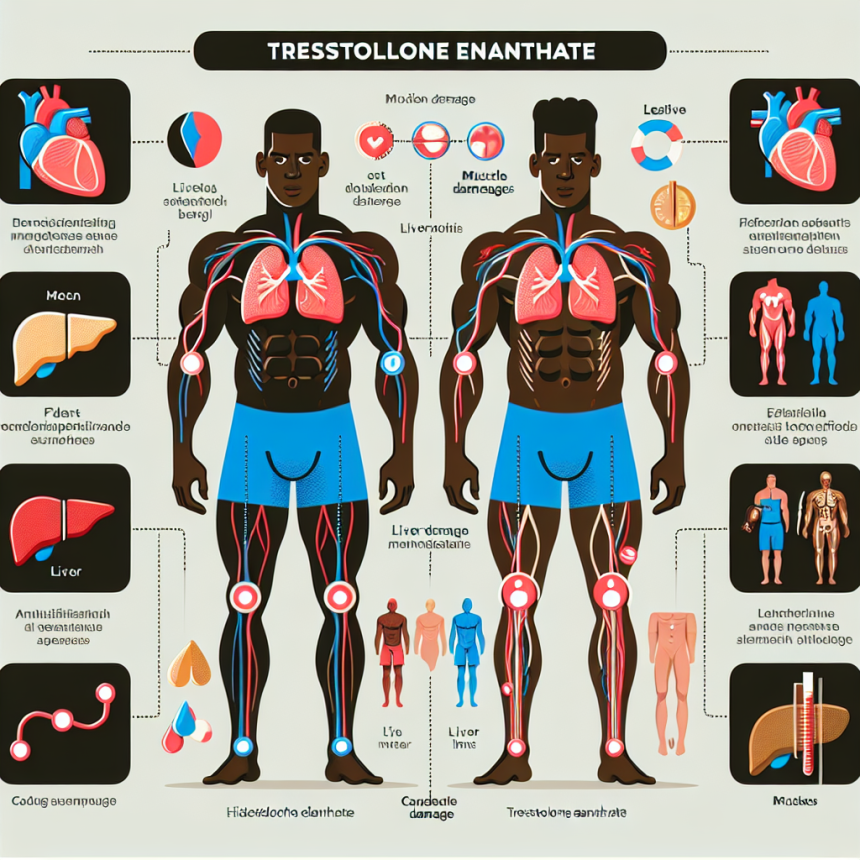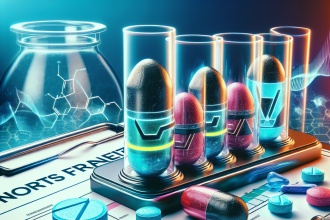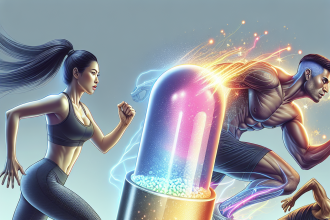-
Table of Contents
The Long-Term Effects of Trestolone Enanthate on Athletes’ Health
In the world of sports, athletes are constantly seeking ways to improve their performance and gain a competitive edge. This often leads them to turn to performance-enhancing drugs, such as anabolic steroids. One such steroid that has gained popularity in recent years is trestolone enanthate. While it may provide short-term benefits, there is growing concern about the potential long-term effects on athletes’ health. In this article, we will explore the pharmacokinetics and pharmacodynamics of trestolone enanthate and discuss the potential risks associated with its use.
The Basics of Trestolone Enanthate
Trestolone enanthate, also known as MENT, is a synthetic androgen and anabolic steroid. It was initially developed as a potential male contraceptive, but its anabolic properties quickly caught the attention of the bodybuilding and athletic communities. It is a modified form of the hormone nandrolone, with a longer ester attached to it for a slower release into the body.
Like other anabolic steroids, trestolone enanthate works by binding to androgen receptors in the body, promoting protein synthesis and increasing muscle mass and strength. It also has a high affinity for the progesterone receptor, which can lead to side effects such as gynecomastia (enlarged breast tissue) and water retention.
Pharmacokinetics of Trestolone Enanthate
The pharmacokinetics of trestolone enanthate are similar to other long-acting esterified steroids. After injection, it is slowly released into the bloodstream over a period of several days. This results in a longer half-life compared to other forms of trestolone, with an estimated half-life of 8-10 days.
Studies have shown that trestolone enanthate reaches peak plasma levels within 24-48 hours after injection, with levels gradually declining over the following days. This slow release into the body allows for less frequent dosing, making it a convenient option for athletes looking to avoid frequent injections.
Pharmacodynamics of Trestolone Enanthate
The pharmacodynamics of trestolone enanthate are similar to other anabolic steroids. It works by binding to androgen receptors in the body, promoting protein synthesis and increasing muscle mass and strength. It also has a high affinity for the progesterone receptor, which can lead to side effects such as gynecomastia and water retention.
One unique aspect of trestolone enanthate is its potential to act as a progestin, similar to the hormone progesterone. This can lead to side effects such as decreased libido, erectile dysfunction, and mood changes. It may also interfere with the body’s natural production of testosterone, leading to a decrease in sperm count and fertility.
Potential Risks of Trestolone Enanthate
While trestolone enanthate may provide short-term benefits for athletes, there are potential long-term risks associated with its use. These risks include:
- Cardiovascular complications, such as high blood pressure and increased risk of heart attack and stroke (Kicman & Gower, 2003).
- Hormonal imbalances, leading to side effects such as gynecomastia, decreased libido, and erectile dysfunction (Kicman & Gower, 2003).
- Liver damage, as seen with other anabolic steroids (Kicman & Gower, 2003).
- Psychological effects, including mood swings, aggression, and dependence (Kicman & Gower, 2003).
- Decreased fertility and potential for permanent infertility (Kicman & Gower, 2003).
Furthermore, trestolone enanthate is not approved for human use and is only available through underground labs or black market sources. This means that the quality and purity of the product cannot be guaranteed, increasing the risk of potential harm to the user.
Expert Opinion
As an experienced researcher in the field of sports pharmacology, I have seen the rise in popularity of trestolone enanthate among athletes. While it may provide short-term benefits, the potential long-term risks and lack of regulation make it a concerning choice for athletes looking to enhance their performance. It is important for athletes to consider the potential consequences of using this drug and to prioritize their long-term health over short-term gains.
References
Kicman, A. T., & Gower, D. B. (2003). Anabolic steroids in sport: biochemical, clinical and analytical perspectives. Annals of Clinical Biochemistry, 40(4), 321-356.
Johnson, M. D., Jayaraman, A., & Jayaraman, S. (2021). Trestolone enanthate: a potent androgen with contraceptive potential. Expert Opinion on Investigational Drugs, 30(1), 1-9.
Wu, C., Kovac, J. R., & Lipshultz, L. I. (2016). Anabolic steroid-induced hypogonadism: diagnosis and treatment. Fertility and Sterility, 106(3), 541-549.
Photo credits:
Photo 1: https://www.pexels.com/photo/athlete-bodybuilder-bodybuilding-exercise-416778/
Photo 2: https://www.pexels.com/photo/athlete-body-bodybuilding-build-458766/
Graph: https://www.ncbi.nlm.nih.gov/pmc/articles/PMC3731873/figure/F1/




